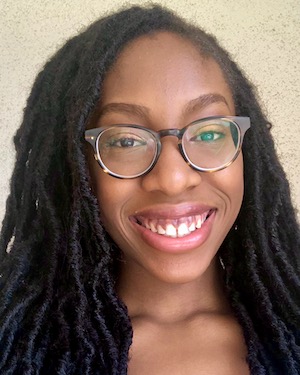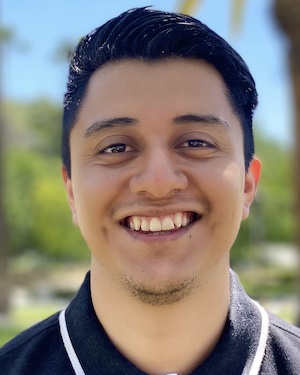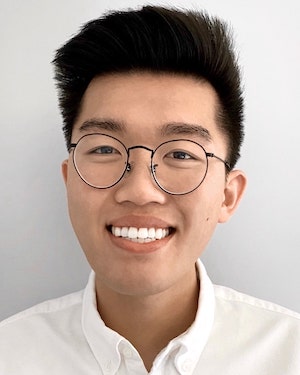Student Blog

You’re Studying Occupational Therapy . . . huh? ⟩
June 1, 2020, by Nmachi
As an Occupational Therapy major in the Bachelor’s to Master’s Program, I constantly get the same two questions asked by friends and family: What exactly is occupational therapy and how did you get into it? Since information about what occupational therapy can already be found on this site, I’ll just expand on why I chose to pursue OT.
From a young age, I have always been passionate about direct service and improving quality of life. Being a teacher, pediatrician, and physical therapist have been past career goals for me because each of them were rooted in helping others with their livelihood.
In high school, I began to narrow my interests down to what I actually could consider making a career out of. I came across the field of occupational therapy upon researching different academic programs at my top schools, browsing the USC website, and talking with my sister (an ‘SC alumna).
I became interested in OT because of the opportunity to provide the longitudinal patient interaction needed to help individuals reclaim their health. Because I cannot imagine losing the ability to perform seemingly simple everyday tasks, my desire is to be in a position to give others the hope of regaining their independence.
The day that I received my acceptance package and found out that I was going to be an Occupational Therapy major was probably the most exciting moment I’ve had thus far! Out of all of the universities I applied for during my senior year of high school, the only one that really stood out was USC. I knew that attending USC would completely prepare me for a career in OT (couldn’t pass up the #1 school for OT in the nation!).
With the countless resources that USC provides their students, I continue to look forward to building an educational foundation in OT and taking advantage of service experiences outside of the classroom to ultimately change my community for the better. I am more than ready to make my dreams a reality.
⋯

Why OT? ⟩
June 1, 2020, by Liz
As I reflect about my time thus far at USC Chan, I come to appreciate the diversity in the program and everyone’s unique story in finding occupational therapy. It’s always great to know that no matter the “why,” we all hold a special love for OT. Some learned about OT through their family members, others have had loved ones receive OT services, and some have personal stories about their journey as the recipient. As for me, the story is a little different!
As the proud daughter of a landscaping gardener and housekeeper, growing up I wasn’t introduced to professions outside of what my family knew. However, when I was about 12 years old, my grandmother obtained a traumatic hand injury while in the passenger’s seat of a terrible car accident. She was an undocumented, uninsured individual in our country and could not afford the care she needed. Due to these barriers, my family could only afford to pay for her pain medication. Over time her injury healed, but her wrist permanently remained curving in towards her thumb — radial deviation. The accident negatively impacted my grandmother’s ability to engage in activities she found meaningful. She found it challenging to dress herself independently, make tamales, and walk her dog. This took a toll on my grandma’s self-esteem and created a deep feeling of frustration. I took it upon myself to help my grandma by doing some of those things for her, but what I discovered was that she wanted to do them herself. So, I tried helping my grandma find ways to participate in those activities as best as she could. Sure, it wasn’t the work a 12-year-old should be doing, but it was so fun! I loved seeing my grandma smile every time she was able to put on her favorite red lipstick by herself. Of course, we still had a bit of cleaning up to do around the edges, but it was amazing!
Years later, I ended up at CSUF with the hopes of pursuing a career as a Spanish teacher. I was taking a kinesiology course to fulfill one of my GE requirements and one day a few seniors came in to present on their internship experience. One of those presentations spoke about occupational therapy! Of course, I went home and did my research and was immediately converted when I knew I could work with individuals recovering from hand injuries. However, as time went on, I discovered that my passion went beyond wanting to help people recover from such injuries. My interest flourished into a love for wanting to provide culturally sensitive care for those from lower-socioeconomic statuses, a barrier faced by my grandmother and many others from similar communities. I am grateful that OT provides me with the opportunity to do so. The best part is that I get to work towards my goal with the support of my amazing academic mentors and supportive peers. I look forward to continue representing the Latinx community and am excited to continue growing as a future OT!
⋯

A Semester Like No Other ⟩
May 31, 2020, by Lamoni
As we all know, COVID-19 has changed a lot of things. That includes our program. It was quite a surprise for us all when we left for spring break and were told that we would not be returning. Everything happened so quickly. A friend from home was supposed to visit but decided to cancel their flight one day before their arrival. A few days later, I received an email that encouraged everyone to leave campus. That same night, my dad told me that I needed to come home and a flight was booked for the next day. While that was a whirlwind, I packed up all of my things with the belief that I would return next month. Most of my belongings, including my car, stayed in Los Angeles while I headed home.
Slowly, reality sunk in and USC announced that we were moving to remote learning. That meant that instead of taking the shuttle to campus, I would be taking all of my classes in my room. The joy and laughter that I once shared with my classmates would now be contained behind a computer screen. Rather quickly, within the first week of online classes, my eyes felt strained and my back started to hurt. I wasn’t prepared to take classes this way. I also began having trouble staying organized. Something about walking to another classroom helped me to sort my courses and organize my thoughts. Changing Zoom links didn’t do that for me. My research moved online too. So did the student organizations that I am a part of. Then, celebrations like birthday parties were online as well. It was a strange feeling because, though I no longer had to commute anywhere, I felt like I was just barely keeping up. On top of that, I now live in a different time zone and have to constantly remind myself that the meeting scheduled for 5PM is actually 7:00.
We’ve now started our full semester of remote learning — a complete load of five courses online for an entire 11 weeks! But I will not be taken off guard this time; I have prepped. Here are some things that are working for me: I have finally begun using Google Calendar (I have no idea how I’ve gone without it). Google Calendar allows me to use multiple time zones. For me, that means that it shows my schedule in both Pacific Time and Central Time. Additionally, it syncs with my computer’s calendar which syncs to my phone which syncs to my watch. And, just in case digital reminders aren’t enough, I also have a whiteboard calendar and a planner. In times like this, you have to cover all grounds. For seating, I have a designated small pillow for my lower back. For my eyes, I have blue light glasses. For energy, I keep a jar of trail mix on my desk. My watch also gives me reminders to stand and I use those reminders for stretch breaks. During class breaks or lunch break, I try to take a step outside to breathe in some fresh air. When classes are over for the day, instead of delving into homework or assignments right away, I give my eyes another break. Typically, I will either read for pleasure or exercise in my backyard.
This semester is different, therefore it requires a lot of adaptations and modifications. But, we’re OTs. We got this!
⋯

Why I Chose the OTD? ⟩
May 31, 2020, by Daniel
Diversity First-Gen What are OS/OT?
For me, pursuing the OTD means much more than just pursuing an education. It represents years of overcoming systematic barriers and paving the way for more first-generation Latinx students. Along the way, I have been fortunate to have a support system that believed in me, which I call my village (family, friends, mentors). As a first-generation Latinx student, pursuing an education comes with many other responsibilities. Personally, my entire college career I’ve had to work almost full-time, financially help my family, deal with imposter syndrome, and felt lost along the way since I am the first in my family to pursue higher education. My dream has always been to earn a doctorate degree, however, I never thought it would be financially possible. During Fall 2019, I began contemplating my options and whether it was possible to pursue the OTD. I struggled with constant questions of, “How can I pay for this?”, “Should I just start working after graduation to help my family out?” This was a time full of emotions and feeling stuck. Fortunately, I was able to ask questions, lean on my support system and this provided clarity. I reflected on my future goals of wanting to teach someday, starting my own non-profit organization, and promoting Latinx representation and leadership in OT, and decided the OTD would better prepare me to pursue these goals. Furthermore, I reflected on the communities I seek to make an impact on and decided to pursue a USC Chan Residency in primary care. Now that I am starting my residency training at the LAC+USC Adult West Primary Care Clinic, I truly believe I made the right choice. I am excited to continue to grow working along my faculty mentors Dr. Beth Pyatak and Dr. Jesús Díaz, and learn the necessary skills to expand OT services in primary care. I look forward to sharing my OTD journey with you and helping you find yours!
⋯

How High School Got Me into OT School ⟩
May 30, 2020, by Calvin
Hi everyone!
First and foremost, I hope that you are all doing well; staying safe and healthy during these times. There’s been so much unprecedented change in such little time, but know that we will all get through this together! I am very excited to be writing my first blog post as a student ambassador, and what better way to start off this new journey than to talk about how I got here at USC’s #1 ranked occupational therapy program!
So as you can assume through the title, I was actually introduced to occupational therapy pretty early on. During my senior year of high school, one of my courses required me to present on a potential career that I wanted to pursue. However, I was just a high school student, so what did I know? The thought of a career had never fully crossed my mind, plus I hadn’t even started college yet! I had the general idea of working in healthcare and helping people in some capacity, but I didn’t necessarily know the specifics.
Thankfully, a good friend of mine was aware that I was struggling and suggested that I look into occupational therapy. She thought that my personality would be a great fit and even introduced me to their cousin, who is actually a pediatric occupational therapist that completed USC Chan’s Entry-Level Master’s program. I was able to interview them and, during our conversation, I was captivated by their passion for the profession. Later on, I was able to volunteer at their outpatient pediatric clinic where I witnessed occupational therapists helping their clients live life to the fullest in such fun and creative ways. The innovation, holistic approach, and unique lens were all factors that resonated with my values and interests, and at that moment, I knew that OT was my calling.
Afterward, I went on to complete my undergraduate education, took a year off, traveled, worked, and I also volunteered in various occupational therapy settings, such as inpatient rehabilitation, outpatient pediatrics, and hand therapy. Then, I got into OT school, and the rest is history (of course, I’ll elaborate more about this in future blog posts, so stay tuned)! To this day, I am so grateful to that senior project and to my friend for introducing me to occupational therapy. Because of that one experience, I grew to understand the complexities and multifaceted layers of occupations and that my every day, taken-for-granted activities actually hold so much meaning. I am blessed to be at this tremendous program where my commitment to OT is consistently affirmed by faculty, staff, and my fellow colleagues.
I’ve learned beyond what I expected throughout my first year in the program, and I am so excited to continue learning more about the profession as I enter into my second year! There are many more stories I have to tell and I honestly can’t wait to share them with you all! Thanks for tuning into my first ever blog post and please feel free to reach out to the student ambassador’s email, .(JavaScript must be enabled to view this email address), if you have any questions or concerns; we are here to support you!
Fight On and Stay Well!
⋯





